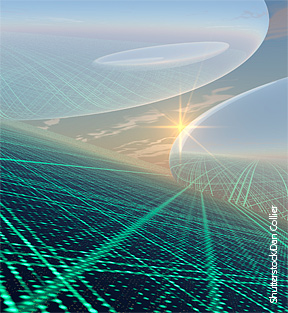| * |
|
Integrating Building Automation Systems with a Smart Utility Grid Project
Summary:A national effort has been undertaken to modernize the electricity generation, transmission, and distribution system creating a new "smart grid" that is more robust and reliable, and includes distributed renewable energy sources. Buildings consume 72 % of all electricity[1]. The key to a smarter grid is integration of buildings and microgrids into the management of grid power (load, storage and generation). A smart grid will enable communication of forward price and load predictions, as well as new markets for energy at the building, microgrid, and retail levels. The focus of this project is to develop measurement science and standards to enable building systems to interact with a smart grid. [1]DOE Buildings Energy Data Book http://buildingsdatabook.eren.doe.gov Description:Objective: To develop the measurement science for industry standards that will enable interconnection of building automation and control systems with a future "smart" utility grid and support industry efforts to develop the needed standards by 2014. What is the new technical idea? The new technical idea is to integrate homes and buildings into the next generation "smart grid" by developing the technical basis for standards governing real-time pricing (RTP) and distributed energy resources (DER) including demand response (DR), distributed generation, and energy storage. This project will develop information models, data representation methods, and communication protocols for RTP and DER, working with industry stakeholders to analyze use cases and develop approaches that can be adopted through consensus standards. In addition, this project will perform research into novel facility control methodologies based on DER availability, electricity price, and local markets, with testing in a simulation environment, in the NIST Virtual Cybernetic Building Testbed, and in the NIST Net Zero Energy Residential Test Facility. What is the research plan? This project addresses communications, interoperability, and control approaches for residential, commercial, institutional and industrial buildings via three research components: (1) information model development to enable data exchange within building systems and between buildings and the smart grid, (2) building controls research for optimal response to dynamic pricing and demand management signals in commercial and residential buildings, and (3) simulation and testing in the Virtual Cybernetic Building Testbed (VCBT) and Net-Zero Energy Residential Test Facility (NZERTF) to demonstrate success, and provide feedback to (1) and (2). The information modeling effort focuses on priority facility interface standards needs identified in the NIST Framework[1] These include price, demand response, energy usage and load, and communications for distributed energy resources (generation and storage) including load forecasting. This work will result in Information modeling standards: Protocol implementation standards:
The building controls research component will develop load and generation prediction algorithms, and DR optimization strategies for residential and commercial building interaction with the smart grid. These algorithms will take into account occupancy, weather, electricity price and DR signals, availability of renewable energy (including storage), and user inputs. In parallel with the other activities, the simulation and testing component will utilize unique NIST laboratory facilities (the VCBT and NZERTF) to test and demonstrate success of the information models and control strategies. These test and demonstration activities will also provide feedback to guide extensions and enhancements to the other research components. EL will also support the broader NIST Smart Grid Program, providing technical direction on issues related to building interaction in the smart grid. EL will provide leadership of the Smart Grid Interoperability Panel technical work groups related to building integration into the smart grid, and leadership within the ASHRAE BACnet, ASHRAE Facility Smart Grid Information Model and OASIS Energy Interoperation committees to advance these standards. [1] NIST Special Publication 1108, NIST Framework and Roadmap for Smart Grid Interoperability Standards, January 2010.
Major Accomplishments:Recent Results: Outputs: Publication of Priority Action Plan 17 Facility Smart Grid Information Model charter (June 2010) Publication of the NIST Framework and Roadmap for Smart Grid Interoperability Standards, Release 2.0 (August 2011) Interfacing Buildings to the Smart Grid, Holmberg, Bushby, IEEE Smart Grid Transactions (in review) Outcomes: Establishment of ASHRAE/NEMA 201 Facility Smart Grid Information Model committee (July 2010) First public review of ASHRAE 201 Facility Smart Grid Information Model standard (summer 2011) Impacts: Publication of OASIS Energy Market Information Exchange standard (Jul 2011) Publication of OASIS Energy Interoperation standard (Sept 2011) Standards and Codes: Project results provide input for revisions to ASHRAE BACnet (ANSI/ASHRAE 135, 135.1, and ISO equivalents EN ISO 16484-5 and EN ISO 16484-6), and OASIS Energy Interoperation and Energy Market Information Exchange. The project supports development of the ASHRAE Facility Smart Grid Information Model and resulting changes in BACnet and Energy Interoperation to implement it. |
 Start Date:October 1, 2011Lead Organizational Unit:elStaff:Principle Investigator: David Holmberg Co-Investigator(s): Steven Bushby, Farhad Omar Related Programs and Projects:Contact
General Information: David Holmberg Project Manager 100 Bureau Drive, M/S 8631 |
